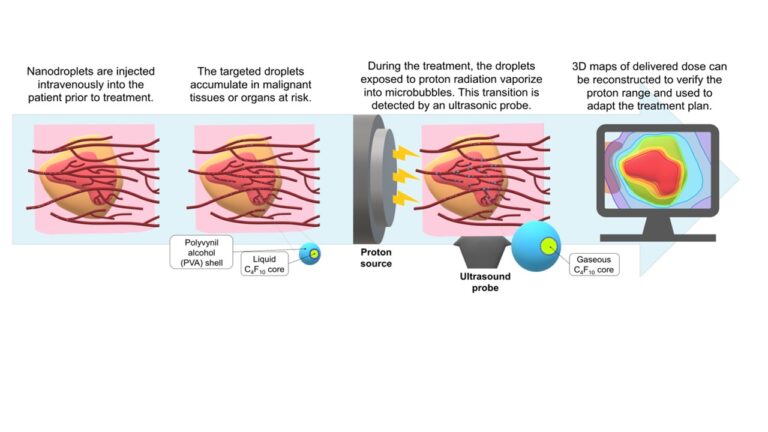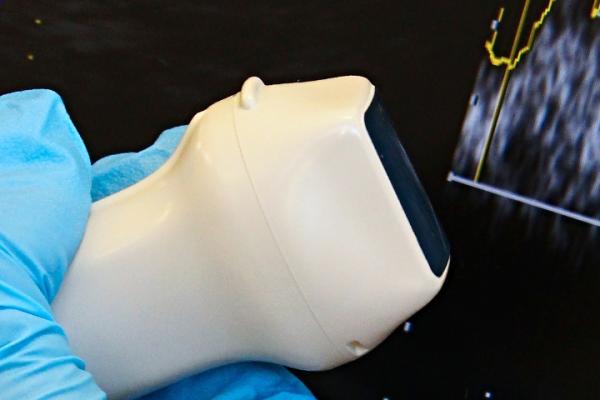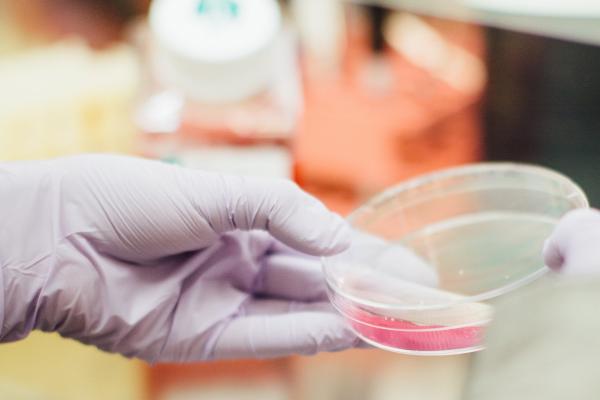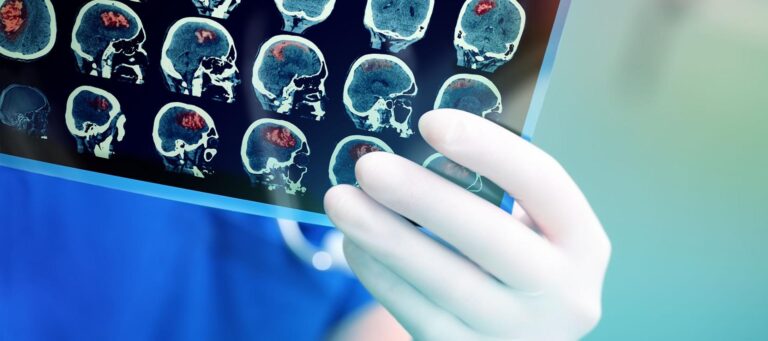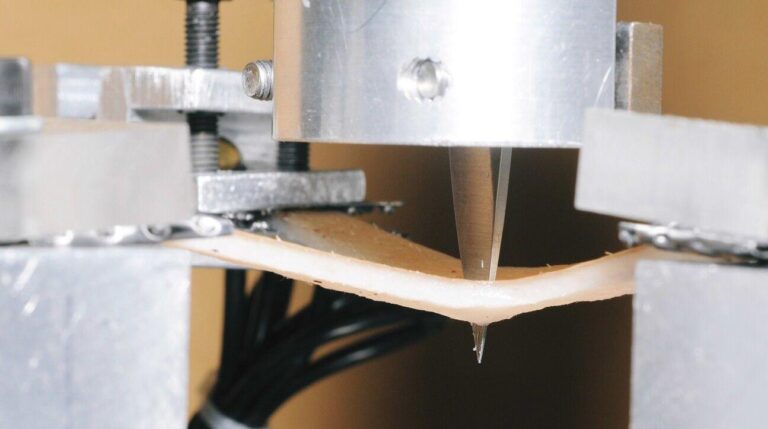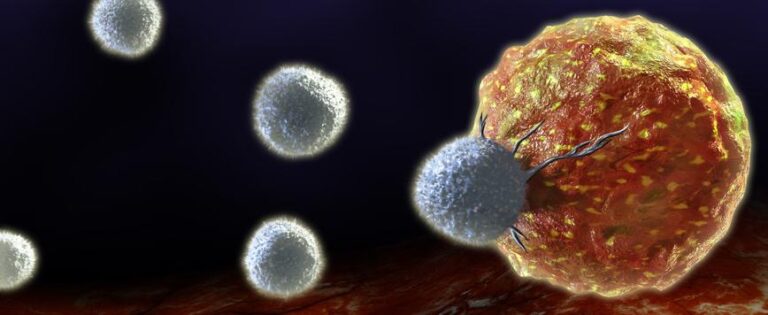Summary
Phase change contrast agents for ultrasound (US) imaging are emerging theranostic systems for cancer research. These can be nanodroplets (ND) of low boiling point perfluorocarbons encapsulated in a biocompatible polyvinyl alcohol shell. NDs can be converted into acoustically active microbubbles (MB) when exposed to photon or proton therapy. Once they are converted to MBs, they can be imaged with US. We have successfully tested this proof of concept at physiological temperature: NDs in phantoms were converted into gas-core MBs using proton radiation and were detected with US. US contrast correlated to proton range.
Result description
At body temperature, a uniform radiation response was triggered by nuclear reaction products interacting with NDs. By varying the degree of superheat, we can modulate the intensity of the generated US contrast, and the sensitivity to different types of charged particles. A sub-millimeter reproducible relationship between the US contrast and the proton range was obtained. This study thus confirmed the potential of NDs for in-vivo proton range verification by observing a reproducible radiation response at physiological temperature. Successful translation of the project will have a direct impact on patients undergoing proton therapy. The proton range and dose distribution can be inferred from the obtained contrast maps, allowing clinicians to detect and potentially compensate errors in treatment delivery. This can improve tumor control, improve the safety of treatment delivery, decrease the risk of secondary cancer or acute effects and extend indications to abdominal and thoracic targets by enabling real-time motion compensation.
We are eager to hear from potential partners.
Addressing target audiences and expressing needs
- Grants and Subsidies
- Collaboration
Further funding to conduct animal trials.
- Public or private funding institutions
- Research and Technology Organisations
- Private Investors
R&D, Technology and Innovation aspects
Current Stage: Validation in small animals
Next steps: Validation in large animals
The same nanodroplets and US technology would be used in all proton therapy centres.
Cancer unfortunately is on the rise. Radiotherapy is a key part of the treatment paradigm. Imaging via commonly used methods is a key part of the process. However, these methods have issues that limit the accuracy of treatment. New imaging modalities are needed to support treatment. The introduction of the technology represents an exportable European based market opportunity.
This development will result in significant private sector investment. Depending on the business plan chosen this will create both direct employment opportunities and additional revenue for local European partners who will perform key portions of the clinical development.
From a societal viewpoint the development intends to help in the treatment of cancer suffers worldwide. It should be noted that Ultrasound as an imaging modality is safer compared to the other modalities currently in use.
Result submitted to Horizon Results Platform by DOSEVUE

